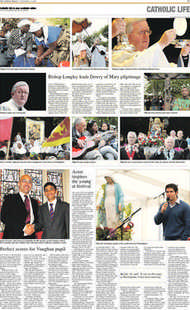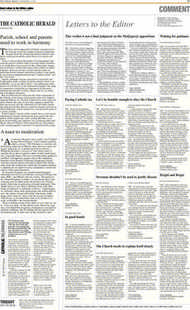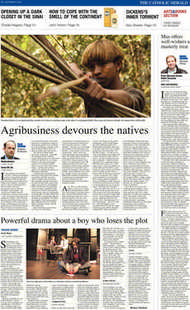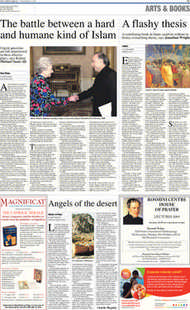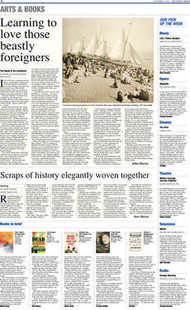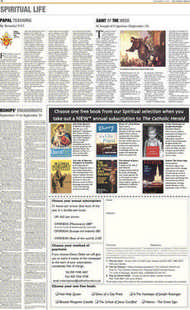Page 12, 18th September 2009
Page 12
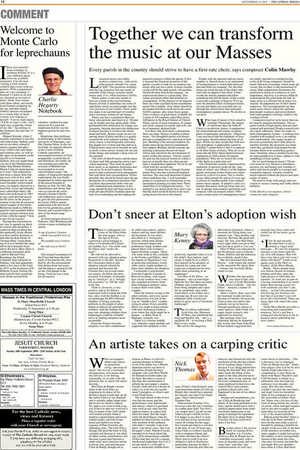
Report an error
Noticed an error on this page?If you've noticed an error in this article please click here to report it.
Tags
Share
Related articles
I Survived My
Catholic Jewels Discovered In A Car Boot Sale
Paxman On Fatima
Blueprint For A Worth-while Visit
Cardinal Applauds Youngsters
Two Masters Of The Lost Art Of Friendship
Welcome to Monte Carlo for leprechauns
Charlie Hegarty Notebook
have just returned from a holiday in southern Ireland. It is a very different place from my youthful memories. I recall once visiting a rural outpost called Cahirciveen with my parents. With a population then of a few hundred, it boasted 13 pubs in all and we checked on several of them: bleak, bare rooms with three silent, red-faced, local farmers propping up the bar and their faded, faithful spouses encamped in a corner. One of these women was singing to herself: “I never shall marry / I’ll be no man’s wife / for I shall stay single/the whole of my life.” According to her husband she had had 13 children.
Modern Kinsale, where I recently sojourned, is not like old Cahirciveen. Indeed, such are its crowded, colourful streets, squares and alleyways, filled with craft shops and outdoor cafes, as well as the signs of prosperous yachting life in its beautiful harbour, that you might think you are in the Mediterranean rather than Mother Ireland; Monte Carlo for leprechauns, as it were. This transformation from a sleepy little fishing town with its few solid Georgian houses and its very many humbler whitewashed ones was largely effected by a local bon viveur and entrepreneur called Peter Barry. He had come to Kinsale in 1963 to run a pub and had stayed for 40 years, in the process turning it into the best-known tourist magnet of the South. Before his death in 2006 his grateful (and enriched) fellow citizens erected a bronze bust of him with the legend “Truly a man for all seasons”.
Passing this memorial on my way to quench my thirst in various jolly hostelries, I could not help recalling that this poetically lovely phrase was first used by Erasmus to describe his dear friend, St Thomas More. I kept thinking of it as I climbed the steep hill to the Carmelite friary above the town. Here, there is a different memorial, dedicated to Blessed Titus Brandsma, the Dutch Carmelite later martyred in Dachau, who had apparently spent a few days at the friary in 1935, at the invitation of Fr Malachy Lynch. During this short time he had visited the sick, drunk several Irish whiskies, smoked his pipe and given Fr Lynch the impression that he was the happiest person he had ever met.
Brandsma, then professor of philosophy at the Catholic university of Nijmegen, was, like Thomas More, to die for his Faith. As spiritual director of the Union of Dutch Catholic journalists, he encouraged resistance to Nazi propaganda, in particular its anti-Semitism. Inevitably, he was arrested soon after the invasion of Holland and incarcerated in several concentration camps. The subject of disgraceful medical experiments, he was finally despatched by lethal injection in the prison hospital at Dachau on July 26 1942. His cheerfulness and strong faith were to convert the nurse – herself a former Catholic – who killed him, and to whom he gave his last possession, his rosary. Fellow priests imprisoned with him loved him for his gentleness, good humour and constant forgiveness of the brutal camp guards.
At Scheveningen prison in February 1942 Brandsma had written a poem including the stanza: This tranquil acceptance of the Cross had been the hallmark of his priestly life, testified by all who encountered him during those last years, and the poem is quoted in full on the wall plaque at the Friary. Truly he was a man for all seasons.
blog comments powered by Disqus












